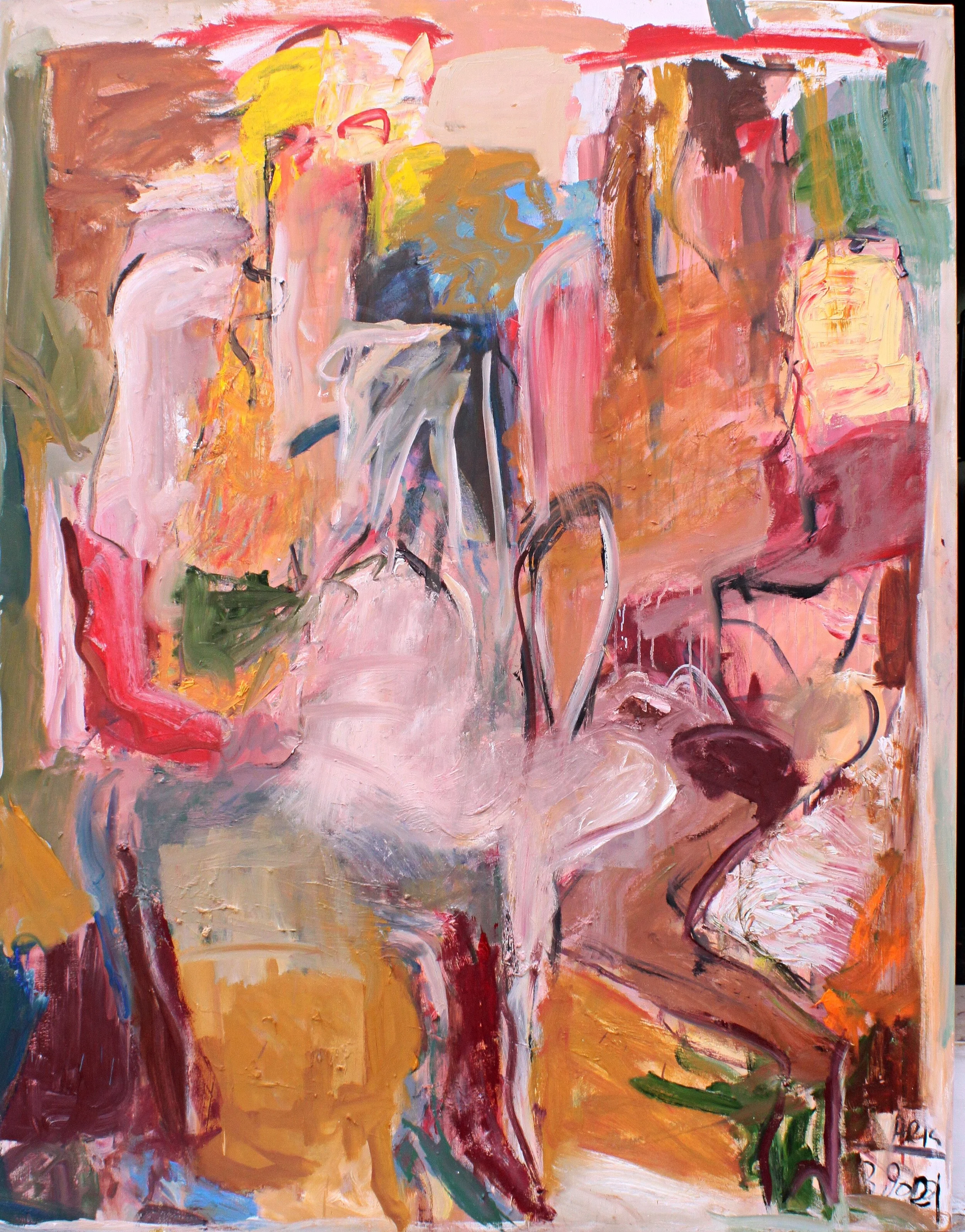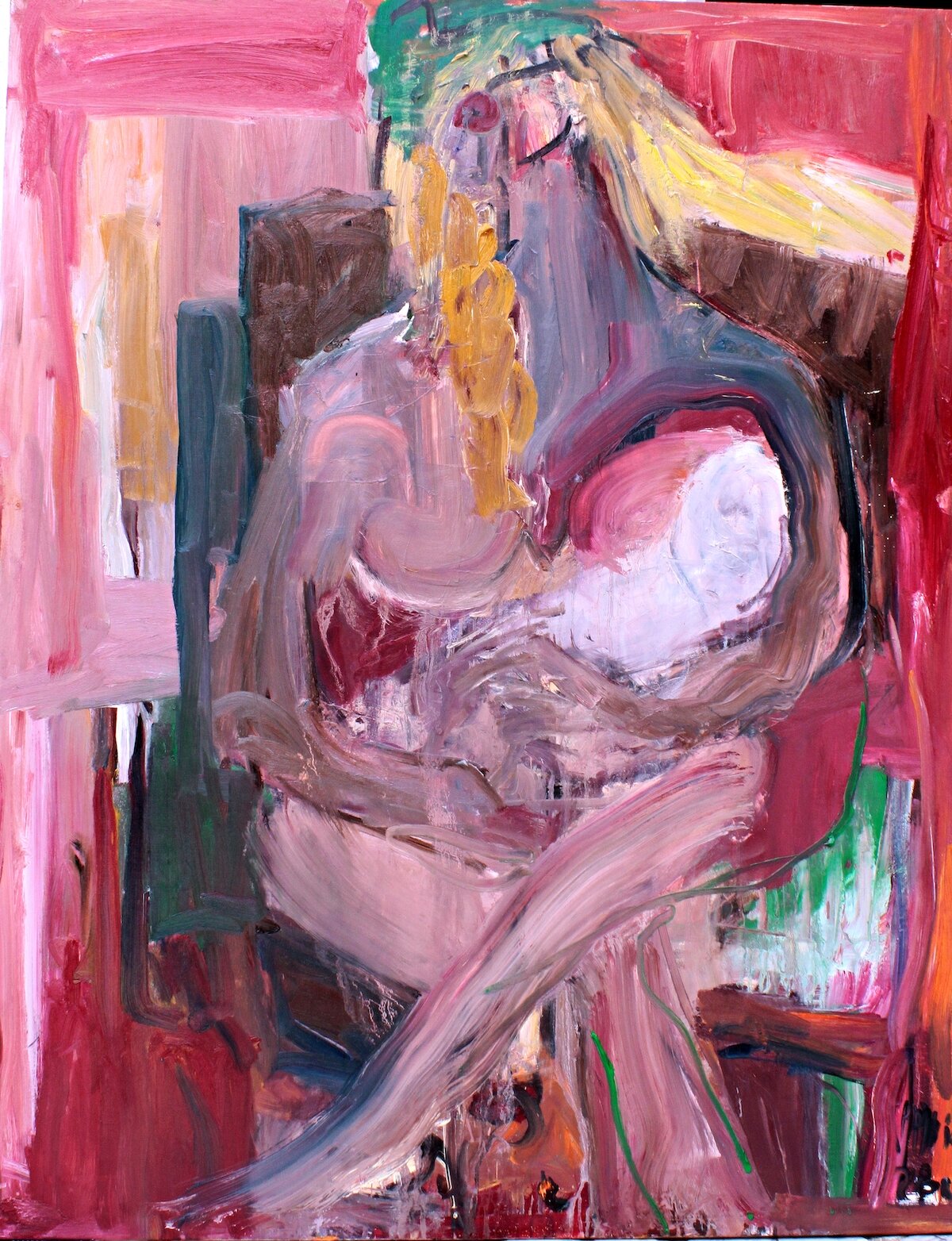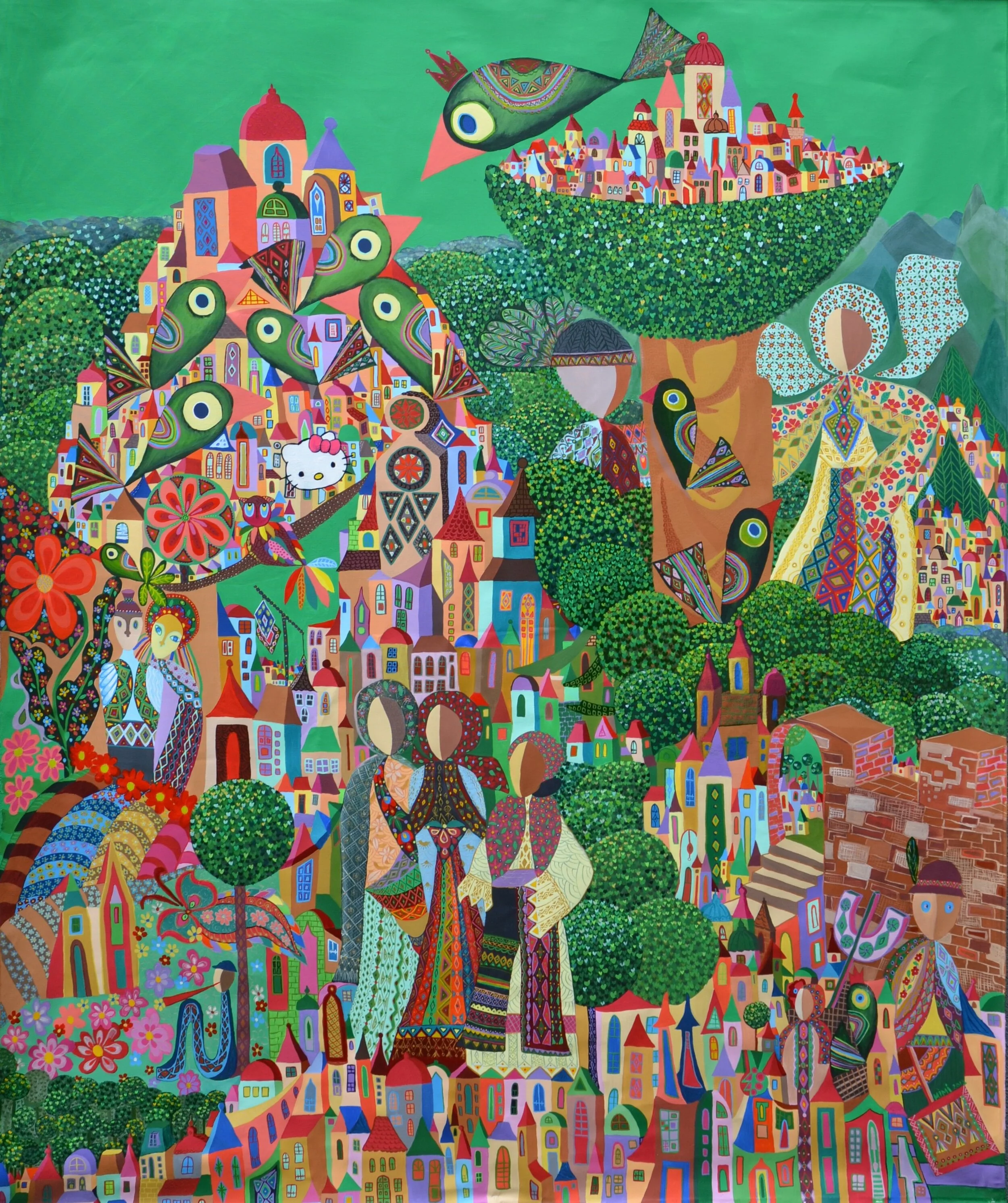Maria Aparici
Biography
She has been distinguished with prizes, such as Premio Scienza del Museo d’Arte e Scienza of Milan (2015), in 2019 and 2020, with the Michelangelo, Botticelli and Frida Kahlo Prizes in Italy, “Artist of the Year” by the Palm Art Award, Artfacts Performance Award 2020, Artist of the Future, Contemporary Art Curators Magazine.
Aparici’s work can be found in corporate and private collections, such as Germany’s Daimler Collection, Investcorp of Bahrein and Cushman & Wakefield in Madrid.
Past exhibitions:
2020 Berlin: Daimler Collection
Madrid: Galeria Orfila, We Women (solo), November 2020
Milan: Artisti Space Watt – April 2020
Córdoba: Galería Aires – December 2020
Venice: Segnalati–Dott. S. Russo – December 2020
Venice: It´s Liquid, December 20 - January 2021
Art Screen TV: Exhibition on Artsynet Online January 2020 -2021
2021
Romantica M.A.D.S Milan: 23rd April - 2nd May, 2021
Paris Art Fair: Gallery Monat Madrid - June 18-20, 2021
Florence: Biennale, October 23-31, 2021
FIABCN Barcelona: December 3 & 4, 2021
Artist Statement
I got my painting degree late, but like Goethe said: ”When you are 60, everything begins anew”. I have crossed that line and am much better for it. We women should be symbols of civilization, it is unbelievable how much it costs us to convince under equal conditions when these are so unequal most of the time, and if we haven’t achieved it yet, it is due to the lack of help and support amongst ourselves. As an artist, I shall defend to the utmost, whilst I still have the strength, the values of my painting, independently of my female condition. I have a strong and original temperament, an immense artistic sensitivity, am pathologically emotional, alternate between states of happiness and living sadness drowned in misery, am very conscious of my surroundings, and create expressions of the outside which describe the essential, I look inside. Inside and outside unite in harmony in order to achieve an interpretation that is free of irrelevance, even if at times it turns out grotesque.
What first prompted you to think of becoming an artist?
Since I was a child, I had a strong and original temperament, and immense artistic sensibility. At school, I illustrated my writings. I was independent, with a strong-willed character, and a physical strength that made me win the surname of “The Always Alive Child.” On the other hand, I was extremely sensitive, I loved animals, I had a duck called “Problema” that fell from a terrace because he always followed me and he broke his leg. I begged my grandpa to heal the leg. He took it to the vet, he fixed it and he was a limping funny duck that, unfortunately, I had to leave at the park in Madrid heartbroken, when school began again and we left the country house and went back to the city I never got stuck with anything because I knew I could invent something to get along with any solution at the end, and instead of avoiding difficult situations I loved adventure and got into new challenges without wanting it. I draw spontaneous and original works with frivolous deviations until I was 7, then my parents separated, and I stopped being the happy child to become a shy timid preschooler. I didn’t draw back until I was 35 in New York when by mistake I got into Parsons New School of Design and again took a course by mistake in Interior design I started to draw tables and chairs. I think I drew almost all the different chairs at the Metropolitan Museum of Art. My creativeness came back and I have to say that It was the best period of my life. Columbia University, Parsons, and motherhood.
What kind of an artist do you ultimately see yourself?
I consider myself an Expressionist artist and I want to explain why. I have a good visual memory and fast and good eyes. The eye is the window to the brain, the art comes live and direct from the brain to the hand, between consciousness and dream and creates monuments of silence that the eye supervises. Thanks to the human neurological system all the impressions we receive daily in the form of millions of images, can be stored and organized by assigning them symbolic or schematic symbols and codes. The Expressionist artist makes an effort as if she were seeing things for the first time, like a child sees them, someone distorted, and getting rid of the superfluous in order to be able to invent things more easily. To create is to express what one carries inside, helped by what is outside. Our interior, together with the exterior, must project itself onto a canvas in case of painting, in a mechanical form, simple and original, resisting the normal habit of knowledge in order to express this mixture of ideas, feelings and concepts. The Expressionist artist needs charm and spontaneity to express ideas and new concepts, with excited traces and original carelessness about details with tremendous freedom to express emotions related in space. And because I am pathologically emotional, too sensitive, I go to greatest happiness and deepest depressions, I have a positively hallucinatory quality, I am precise, I have a fast observation of movement, and sometimes a monumental force of expression, in order to create expressions free of irrelevancy, to express nothing but the essential, and achieve mutual interpenetration of these two kinds of experiences, the inner and the external, I change my mind permanently, In my permanent search for simplicity, I am trying to avoid in my work sensationalism, anecdotes and coincidence, yes I consider myself an Expressionist artist.
Max Liebermann said that what couldn’t be painted from memory, couldn’t be painted.
The more you see the more you know, but as Paul Klee said: "Art doesn't render the visible".
What are you hoping to communicate to the viewer through your work?
We are all creators but the real artist wants to communicate the ambiguity of our existence, a very personal order when she files what surrounds her. I am a creator, without the needing for all the relics of tradition and the past, because I don´t have a past as an artist in my long existence. I have a very personal way of telling stories. As we live in each other's eyes permanently for good or bad our stories will never end, a new idea, something to share, a new event a new challenge, a new risk. Goethe said that “when you´re sixty you start all over again” Dedicating, although late in my life, to pursuing creative outputs is something that came from birth, and although it stopped for almost my entire life, I am back and, depending on my emotional state, I work in my ironically painted imagery without any pessimistic intention because I went back to the child’s lovely disorder. Artistic sensitivity and aesthetic perception increase with age, then we have to add the skills learnt and go hand in hand with becoming less original because egocentrism in a child is a quality that makes children work so magnificently.I take care of myself more than I used to, and I am capable of reinventing preschool metaphors that I had to abandon at the age of 7, therefore as an adult, I am trying to hide the skills and dexterity of knowledge, I must get rid of stereotyped representations and conventions which inhibit the precious freedom of a creative child who knows no such preoccupations. I am concerned with protest or drama, I grasp what I see or feel from the external world of forces and forms that influence me, trying constantly to collect new experiences, and combine them with my inner world in grotesque harmony. The world appears as a joyless place, but I hate sentimentality and my wish to record the inexplicable things of life becomes more intrusive and stronger. The individual work serves as an expression of our most personal state of mind at a particular moment and of the inescapable imperative need to release by means of an appropriate act of creation in the rhythm of form, colour and movement. Because I am honest, flexible, and sensitive, and I can´t help my womanless floating existence. I paint grotesque mirrored figures of women in Naples Red Yellow light, applied directly to the canvas with a soft wavy touch that makes them tremble as if there were drunk. I am going for one or two figures format right now, standing mostly frontal pose, fresh paintings are done rapidly, sketchier faces, absence of detail, ambiguity, seductive, and intense and repellent like me. Through history we´ve been prototypes of abusive patriarchy, which has created fashion at the expenses of our body, static mannequin of tendencies. My story is a vindictive feminine and feminist metaphor and a reflection about the standards of beauty imposed by men. In my work I state clearly our gender condition, my personal female status, my own experiences of exclusion and vulnerability are my references. I dare talk about the atrocities that appear in our status as women, but also, I state our controversies, contradictions, dark zones and hidden parts (never mentioned) of our existence. Because we are not such martyrs, nor such whores. We are transgressive of our modesty, pioneers in suffering, but we hide certain feminine ruses. And because through my work, I make them come to light, it acquires a controversial character, because I position myself in the equitable center. My unusual transgressions of ungainly and daubed women surge from social critique, revealing stories, meanings, and situations in which the patriarchal system has humiliated, threatened, and excluded us. In my work I do raise the women to the high level of idol, a ridiculed Goddess revered and envied. I rebel and laugh about our high heel idiocy, we should eliminate rivalries, which is the same as stop competing for the male. All that puts us in a subaltern situation in a male chauvinist society which erases us from site, once age puts more weight on our hips. We have to have confidence in ourselves, by way of my art as an artistic instrument I gained this confidence and I have the privilege to be vindictive, free of irrelevance of prejudice with my work, even if at times my images turn out to be grotesque, ugly, unreal and diabolical.
Can you explain the process of creating your work?
Painting is a hard work; I change the whole picture several times. I start with a face and I end up with a dog but whatever the ending is, from the work has to emanate a halo of uniqueness, unity and aura no matter your anxieties drawn within it and an ambiguity without paragon. I don´t make sketches to record my impressions. It is an original and different way to create something that can´t be taught. We need a lot of practicing, seizing things quickly, and make lots of works from memory in bold strokes, bright pure colors, and simplified natural forms. It is not schematics and destructing forms with wild and uncontrolled storms of colors, it needs to have mastery in anatomy so as to be able to invent new own beings, a system of rules of forms, which would be still natural in their effect because they are constructed in accordance with the rules of nature, it is just the sensitivity of forming unconscious processes, and as I said, trying to hide my skills learnt during all those years of silence. And then, “her work is about an expression, explosion, eruption, unpredictable irresistible power, explosiveness, spiritual urgings and furious energies, attitudes of mind more than an artistic form”, said the art critic Gerardo Gil about my recent exhibition ‘We Women’ at Madrid’s Orfila Gallery. I can´t stand the banal and mundane, I rather remain enthusiastic with my ego than represent objects precisely and unsentimentally in all their details.
What is your favorite part of the creative process?
From the vague idea, the work develops on its own accord under my orders, if the consciousness of the subject is disrupting and confusing, I need more concentration of the impression to intensify expression rather than on the physiognomy. Artistic synthesis works burn from inner necessity. I don´t want apathetic expressionless models, forms that represent nothing, any feminine coquetry, what I want is to sacrifice the power of explicit statement or to represent an idea without the object. Color is an independent form of expression too, needs to work effortlessly as a union between color and form. I paint vibrant, strong works with a sense of harmony because it was born with me, with dynamism which is in my genetic and spontaneity which seems to project right from the core.All of this sounds so tiring, and exhausting, all this paraphernalia in such a tediously executed work in a complex world. But complex maneuvers don’t work, in order to produce greatness, you have to be simpler. Because as Mies van der Rohe said “Simplicity is not that simple”.I am going for a two figures format right now, standing mostly in a frontal pose, fresh paintings done rapidly, sketchier faces, absence of detail, ambiguity, seductive, intense and repellent like me. My figures are sometimes individual, sometimes in situations or, many times, examples of stereotypes which we associate with the female condition, the roles women have to play in our society. Independently of my female condition, I have a strong and emotional temperament, maybe expressionism always interested me because of this. Says art critic Antonio Leyva Sanjuan: “It was the German painters, founders of this style, who at the beginning influenced her the most. Kirchner, for example, with his feminine figures so present in his work, but never idealized in accordance with a certain norm of beauty, such as had been happening until then. If possible, her work is now even more intense. Driven by what seems to be a sense of urgency, she eliminates everything superfluous in order to concentrate on that emotional aspect by way of free and spontaneous gestures, breaking down as she goes the limits between abstraction and figuration. There is also a physicality and an exuberance of the bodies, the exact opposite to the currently fading virtual fever. A physicality related to the expressionist primitivism within this grotesque satire but at the same time with a sincerity and tenderness more proper of childish drawings which makes her paintings even more direct and empathic.” I want to claim the final necessity to directly contemplate my works and through them to connect with the spectator who definitely does not leave indifferent after having studied my paintings. Some love them, others leave scared, and that is only achieved by way of the very act of painting.
Can you give us an insight into current projects and inspiration, or what we can look forward to from you in the near future?
Art is the gift of something new, not the reproduction of something already in existence. The great purpose of art, besides the pedagogical aspects, is to mold sensitivity. Quality is the name given to the inner greatness of a work, the attribute that distinguishes it from the works of imitation and small minds with no penetrating souls. To create curiosity, the essential work coming from the inside mirrors a beautiful outside or simply ugly, different, sublime, proportionate, harmonious, interesting.. I express myself through my cute innocent funny works. Figures and compositions unite in harmony to achieve a free interpretation that flees from irrelevance even if at times they turn out grotesque. I want the spectator, in a conceptual manner, to feel something different, a spontaneous, precise and special new message in this current era of adult illness and suffering due to the pandemia. Who would not want to go back to be a child, to return to the period of an egocentric scribble? To return to paint like a child.
Picasso said that he spent four years trying to paint like Raphael and an entire life to draw like a child. With all that, I search for and desire a little more, I would love for my work to invite everyone to reflect. And here is my question: why come back now? Because history repeats itself.
Website www.mariaaparici.com
Instagram https://www.instagram.com/maparicivon/
At The Park/O/C146x114cm
Cyborgs/O/C 146x114cm
Frozen Eggs/O/C 146x114cm
Kill the Sofa Not The Dogs O/C 146x 114cm
Sunset/O/C/146x114cm
Two Girls In WhiteO/C/146x114cm









